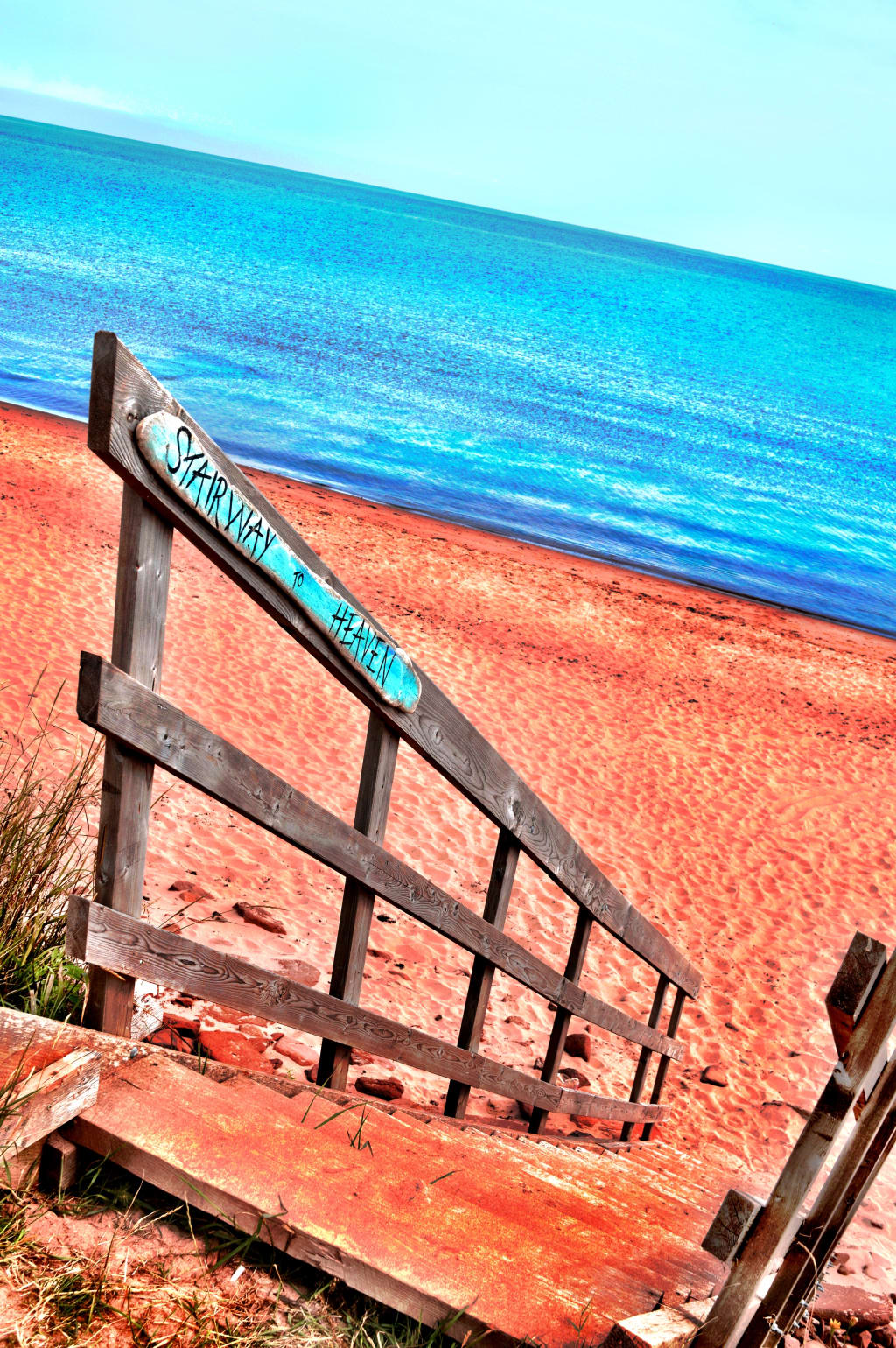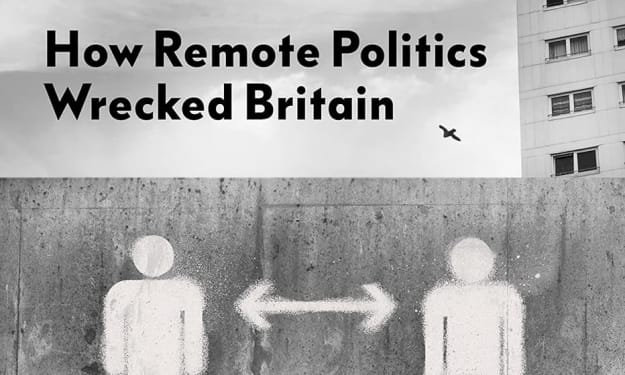Cycle of Life
Gilmore Girls, feminism, and popular culture.

**This article contains spoilers of Gilmore Girls: A Year in the Life**
“Mom.” “Yeah?” “I’m pregnant.” Those final four words from Rory Gilmore have now erupted shock waves across the internet, phone lines, and social gatherings. I, like a large score of others who loved the Gilmore Girls show for years, am no exception. I gasped, I laughed, and I logically saw it as an opening for another revival. But, as I sat on my bed, my knitting falling from my hands, staring solo at my television I couldn’t help but feel a strange mix of nostalgia, anger, let down, and longing wave over me.
For months now I’ve been working on various feminism projects, and in the midst of that I’ve found myself re-watching Gilmore Girls as the show has always been my feel-good, go-to, comfort food of no calories. That combo is hard to find, and about four years ago when Netflix released the entire series I was one of those mid thirty-year olds who spent the better part of a Thanksgiving weekend drinking coffee and watching fictional memories that are my own come to life. As a child and teen I fell in love with the classic Anne of Green Gables, and perhaps like an expectation I always saw writing as my career. In college I edited the campus newspaper (why yes, just like Rory), and after university I largely went to grad school but my dating and travels have been similar if not parallel. Rory has long idealized Christine Amanpour, since that pilot when she was admitted to Chilton and the second episode where she told the headmaster she wanted to be a journalist like Amanpour. Rory and Anne, in that regard, are parallels of each other in that Anne dreamed of writing and travelling the world just like her modern day counterpart.
Anne didn’t have televised or media icons to tote in her novels, as she was set in the waning Victorian period—ending with World War I—on rural Prince Edward Island. Her puffed sleeves, red hair, and fiery personality made her a stand out. Throughout the eight book series she graduates college, writes some, publishes a little (most notably when her gal pal Diana sends a story off to a baking powder company contest), and marries her childhood love of Gilbert Blythe. Gil, I won’t lie, was a childhood crush of mine, my best gal pals, and probably several generations aside from my own. In book six Anne embraced her own cycle of life, as she went on to have six children with Gilbert and become his dutiful wife. Her own writings and dreams were cast aside, as she created new dreams of expectation and familial dreams and duty. In 2009 avid fans got a new(er) glimpse of Anne’s world with the release of The Blythes are Quoted. Here, Gil was a bitter middle aged man who mocked his wife and dominated the house. The ninth book, really a collection of outcuts of Anne’s later life, capped off the end of a dream. Anne really had become like everyone else, with dreams forgotten and tucked away, placing her family firstand letting the rebel fires fade.
Even with the ending Anne was, and still is, a feminist icon. She had a voice, inspired her friends and students, and in her youth she fought for the underdog and forgotten. Yet, for many of us we look the other way at the end of the series as it changes from the wild-eyed girl we loved to a dutiful, respectful, and almost predictable wife of gender binaries. Yet, Anne—like Gilmore Girls—has a another trick up its puffed sleeve. Book eight, Rilla of Ingleside, isn’t about Anne per se. In all reality, the book is about Anne’s youngest daughter Rilla . . . who is the most like her as the novel attests. Set during World War I, Rilla comes to her own self awakening as boys, friends, and a potential love leave for the battlefields of Europe. As she is left on the island, in the rural and small town life she has grown up in, she awakens to her own sense of self, realizing who she loves, and in L.M. Montgomery tradition she embraces her gendered role of island life, motherhood, and home duties. . . her cycle of life.
Juxtaposing Rory next to Anne produces some obvious similarities, but just a smidge deeper and the complexities continue to unfold. Lorelei, our fearless single mom who had Rory as a teen, is the Gen X cool-kid to Rory’s millennial crowd. I’m a Gen Xer that fell for the show, and while there’s always jokes to be made about millennials and Gen Xers hating on one another Rory is a millennial I like. That aside, Lorelei is more than just a generational marker . . . her independence, determination, and embracing life view (with her love of rock music and rebel yell style of dressing) make her our mainstream, acceptable Riot Grrrl. Like those underground rockers of the early 1990s demanding a place and to be heard, Lorelei walked out on her breeding and carved a life by hand with her DIY style, sewing machine, and willpower to carry on. Lorelei tells girls—okay women—like me that we can rebel and thrive. Though, there’s another message here: thriving is one thing, but in the end your cycle of life will bind you. Dream, thrive, and drive but . . .
Lorelei never breaks free from her familial bindings, as the series starts with her needing money for Rory’s education and the revival ends with her making another deal with her mother for money to expand her inn. In the end, the years of fighting and angst between Emily Gilmore and Lorelei rest on the classic mother-daughter love-hate relationship. Of course, Emily went to college at Smith, never had plans of working as she always wanted to marry right away and did what was expected, and she got a daughter the opposite of those dreams and realities. These two will never have a warm and fuzzy bond, but as the series ended and the revival gave us (round two) the two Gilmore woman found a common ground, a peace to their feud, and their own life cycle emerged. Emily finds her own identity after Richard passes and she relocated to Nantucket, long after she had hoped her granddaughter would marry “the Huntzburger” boy right out of college, and as these cycles go the optimistic onlooker could imply that perhaps—after all these years and fights—Emily is more like Lorelai than we would have originally thought.
As I sit here with a print of Gloria Steinem staring at me, I look on my emotions responding to the lives of these fictional women. Rory ending the Gilmore Girls story with her pregnancy—with the handsome, wealthy, and showman Logan as the logical father—speaks of the underlying story that was there all along. The cycle of life and station guide these characters, just as they drive us in reality. Rory can never really escape that small town that invested so much in seeing her grow and prosper, as a Yale graduate with connections and family money is still wandering and without permanence at 32. Yes, that’s a slight testament to the rising trends of her generation, but with the story’s conclusion that she saves the Stars Hollow newspaper, is pregnant, single, and without a paying job a moralistic clause surfaces. On one hand, the history of Rory’s sexual encounters leaves her in a wake of emotional chaos (losing her virginity to the married Dean, having casual sex with Logan and dropping her emotional willpower when she realizes she wants more from him than he is willing to give at first, and turning down his marriage proposal which allows her to run after a campaign trail but costs her love in the long run) and her still revolving around Logan eight years after their break up compares to the long love affair of Christopher and Lorelei. In many ways she’s emulating the bad seed love her mother ran after, and on the other side of the story she is secretly embracing the right breeding that her grandmother so longed for her to have (as we saw in season six and the infamous party to find her a suitor and her and Dean break up for the final time).
Like many viewers, or readers, I’ve long found parts of myself in these stories. I largely came of age during Riot Grrrlfeminism, and my feminist, activist soul still fights for the voices of women and girls, their health, and their vitality. I still see myself as a writer—most days—and like Rory I’ve seen my career take some startling highs and lows. Much like Lorelei and Sooki, I’m still best friends with two gals I’ve come of age with (both from graduate school). The one I don’t get to see nearly enough, or hear from, and the other is my Sooki meets Michele as we push each other and angry girl each other with a casual grace and ease that others look on with envy and fright. I’m terrible at dating, don’t do it much, and in the end I have my own version of Logan (okay, obviously sans the bags of money). I appear to have connections—with my layers of education—but like Rory they don’t always translate out to the level of success novels and fiction would have us believe. Instead, I believe my cycle of life broke me from a small town as my family spent much of my youth moving. These days, especially as I ponder fictional reality, I think that this traveler and dreamer has a few more zip codes in her as that has been my life cycle and the one I was reared from. Rory, on the other hand, was reared from a mix of wealth and working class ideals. Anne, as we noted, arose from sentimentality, workmanship, and frugality.
On some levels these stories anger me, as the gendered expectations of life still center the narrative. But, stepping back for a minute I side eye the Rory pregnancy with a moment of hope. Maybe, in the new millennium, we will get a character who continues her dreams and aspirations in the face of a child. After all, women are still moving forward and having a career has long been removed as a mark of shame. In the end, we all end up on a life cycle as life has a funny way of finding a way to work us all out. After all, it was always about the women (from Gilmore Girls to Anne), the lives they wove together, the combating personalities, the ages and forms of feminism, and the cycle of life itself.
About the Creator
Annessa Babic
Annessa Babic is a bit of a gypsy having lived from coast to coast and travelled around the globe. She's a freelance writer, photographer, and professor. She's written scores of pieces on topics from travel to the changes of life itself.






Comments
There are no comments for this story
Be the first to respond and start the conversation.